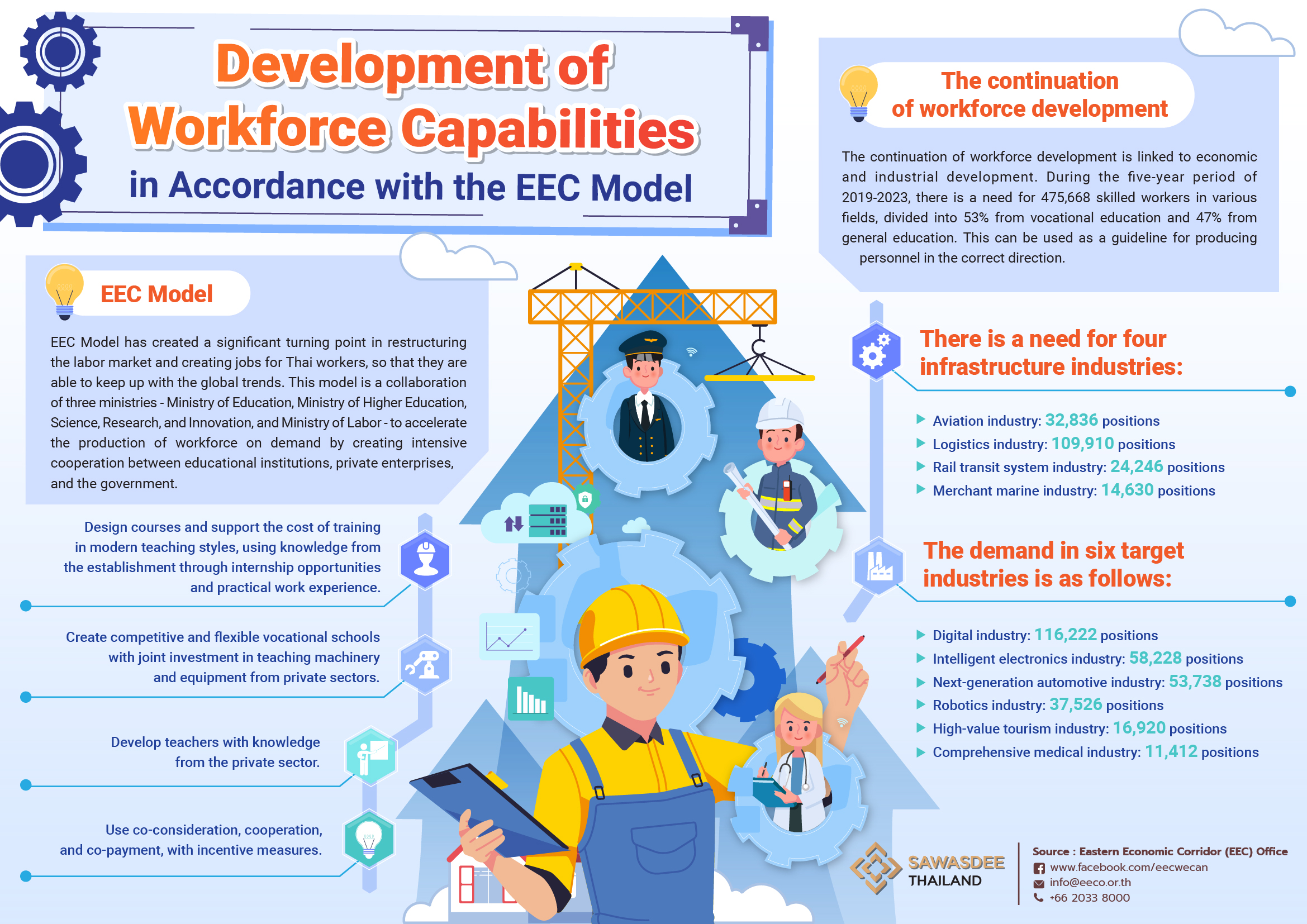
Development of Workforce Capabilities in Accordance with the EEC Model
The Eastern Economic Special Development Zone Policy Committee has placed importance on human resource development ever since the establishment of the EEC Office, together with the ongoing development of core infrastructure projects.
Human resource development in the Eastern Special Development Zone (EEC Model) initially developed personnel by using a “demand-driven approach” to meet industry demand. This is the new model for producing people to meet the needs of 10 target industries through cooperation from the government, educational institutions, the private sector, and relevant agencies. The main goal is for people in the EEC area, represented by the private sector, to participate in the form of co-trainers and co-payment.
The EEC Model has created a significant turning point in restructuring the labor market and creating jobs for Thai workers, so that they are able to keep up with the global trend. This model is a collaboration of three ministries – Ministry of Education, Ministry of Higher Education, Science, Research, and Innovation, and Ministry of Labor – to accelerate the production of workers on demand by creating intensive cooperation between educational institutions, private enterprises, and the government, as described below.
The continuation of workforce development is linked to economic and industrial development. During the five-year period of 2019-2023, there is a need for 475,668 skilled workers in various fields, divided into 53% from vocational education and 47% from general education. This can be used by the relevant agencies as a guideline for producing personnel in the correct direction.
There is a need for four infrastructure industries:
The demand in six target industries is as follows:
Source: Office of the Eastern Special Development Zone Policy Committee, CAT Telecom Building, 25th Floor, 72 Soi Wat Muang Khae, Charoenkrung Road, Bangrak Subdistrict, Bangrak District, Bangkok 10500
Tel: +66 2033 8000
